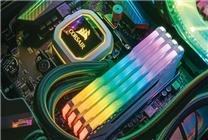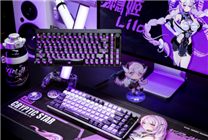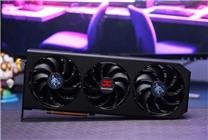Kingston Dominates the Global Memory Module Market: A Look at the Landscape
Summary:
- Kingston holds a staggering 66% share of the global memory module market, significantly outpacing competitors.
- The overall memory module market is projected to generate $13.3 billion in revenue for 2024, marking a 7% year-on-year increase.
- Other manufacturers struggle to compete, with the next largest player capturing only 5% of the market share.
In the competitive realm of DRAM memory chips, three industry giants—Samsung, SK Hynix, and Micron—dominate the landscape. However, when it comes to the downstream memory module market, Kingston has established itself as an unparalleled leader, commanding 66% of the market share. This figure underscores Kingston’s supremacy, positioning it in a league akin to NVIDIA in the GPU sector.
According to recent insights from market research firm TrendForce, the global memory module market is gearing up for notable growth in 2024, with anticipated annual revenues hitting $13.3 billion. This represents a year-on-year increase of 7%, reversing the declining trend experienced in recent years. The resurgence reflects not only Kingston’s enduring strength but also a broader recovery in demand for memory products as technology continues to evolve.
Market Dynamics and Competitive Landscape
The competitive arena is stark, with Kingston’s dominance yielding a vast gap between it and other players. The second-place manufacturer, Weigang, holds a mere 5% of the market, while Jintech and Telescope both account for just 4%. These numbers underscore the stark reality: the vast majority of the market is concentrated in Kingston’s hands, leaving limited space for other manufacturers to establish a foothold.
The disparity continues as we move down the rankings, with many manufacturers struggling to maintain a 1% market share. For instance, companies like Bodi, Yiding, and Yuzhan are all confined within this narrow band, with AGI, the eighth player, capturing just 0.2% of the market. This competitive landscape illustrates the challenges faced by newer entrants and smaller brands in carving out their niche.
The Bigger Picture: Global Output Value
The overall output value of DRAM memory chips remains impressive, exceeding $100 billion. However, within this substantial market, memory modules play a relatively minor role for many brands. A significant portion of memory module production is undertaken by OEMs catering to large PC manufacturers, further complicating the competitive landscape for standalone brands.
Future Considerations
As the industry moves forward, it will be interesting to observe how the memory module market evolves. The projected growth offers opportunities for innovation and expansion, particularly as consumer demand for higher-performing memory solutions rises. However, Kingston’s established position will likely challenge any efforts from smaller competitors looking to gain market share.
Conclusion
Kingston’s remarkable 66% market share in the global memory module landscape illustrates its dominance and the competitive difficulties faced by other manufacturers. As the memory module market anticipates substantial growth in 2024, the landscape will continue to reflect the powerful influence of key players like Kingston. With a limited number of brands able to stake a claim in this arena, it remains to be seen how the industry will react to changing demands and technological advancements in the coming years.
Key Takeaways:
- Kingston leads the memory module market with a commanding 66% share.
- The memory module market is set for significant growth, projecting $13.3 billion in revenue for 2024.
- Smaller manufacturers struggle to gain traction, reflecting a highly concentrated competitive environment.
This article highlights the current state and future outlook of the global memory module market, setting the stage for ongoing discussions about competition and innovation in the tech industry.







